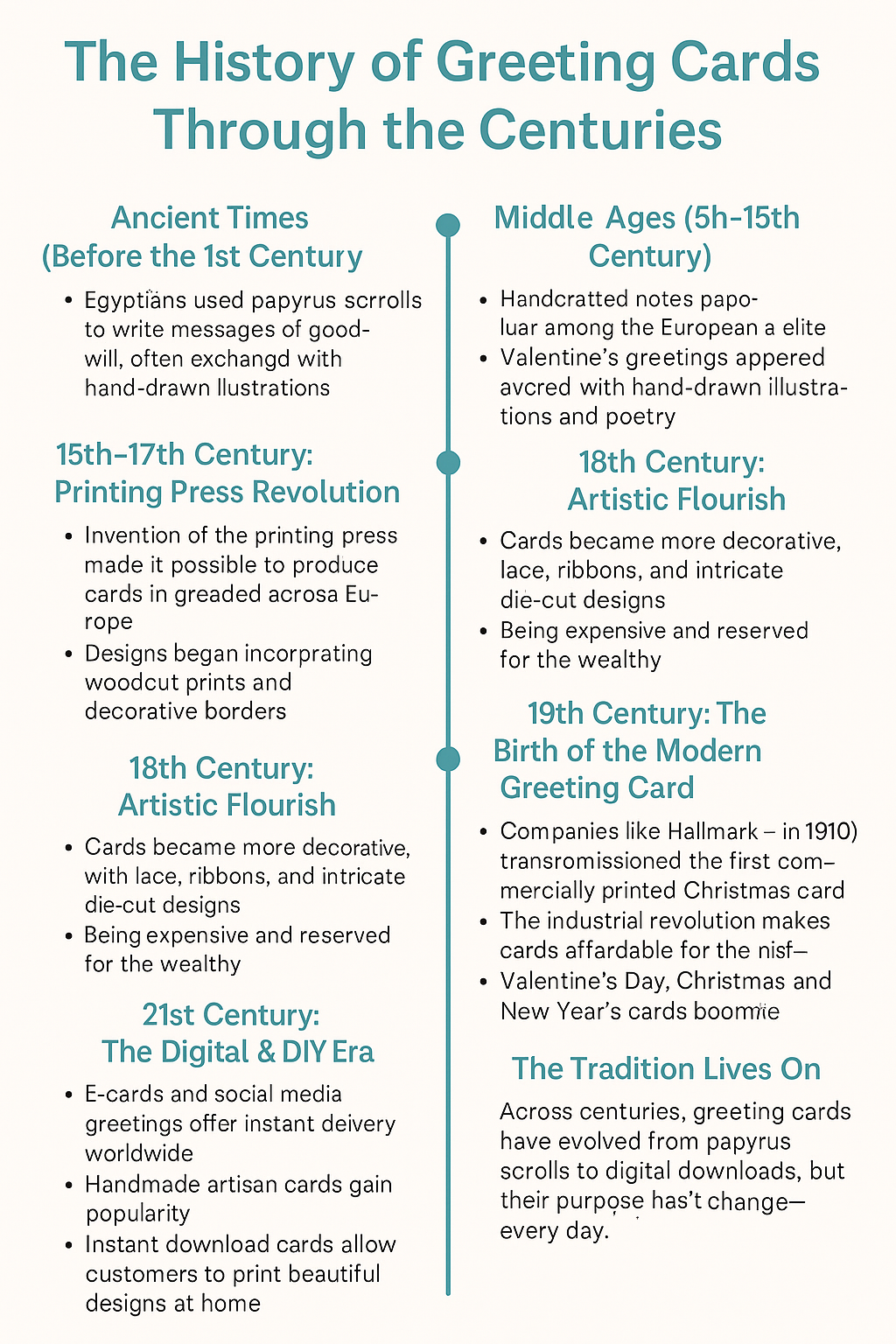The History of Greeting Cards
Through the Centuries
Greeting cards have a surprisingly long and fascinating past—spanning thousands of years, evolving in style, purpose, and availability. Here’s how they’ve changed through the centuries.
Ancient Times (Before the 1st Century)
Egyptians: Used papyrus scrolls to write messages of goodwill, often exchanged for special occasions.
Chinese: Sent New Year’s messages with beautiful calligraphy and symbolic art to bring luck and prosperity.
Middle Ages (5th–15th Century)
Handcrafted notes became popular among the European elite.
Valentine’s greetings appeared as early as the 1400s, adorned with hand-drawn illustrations and poetry.
Cards were personal and one-of-a-kind, often made from parchment or hand-painted paper.
15th–17th Century: Printing Press Revolution
The invention of the printing press made it possible to produce cards in greater numbers.
Early printed New Year’s greetings and Valentine’s cards spread across Europe.
Designs began incorporating woodcut prints and decorative borders.
18th Century: Artistic Flourish
Cards became more decorative, featuring lace, ribbons, and intricate die-cut designs.
They were still expensive and often reserved for the wealthy.
Exchanging cards became a popular courtship tradition.
19th Century: The Birth of the Modern Greeting Card
1843: Sir Henry Cole in England commissioned the first commercially printed Christmas card.
The industrial revolution brought advances in printing, making cards affordable for the middle class.
Valentine’s Day, Christmas, and New Year’s cards boomed in popularity.
20th Century: Cards for Every Occasion
Companies like Hallmark (founded in 1910) transformed greeting cards into an everyday tradition.
Lithography and color printing allowed vibrant, detailed designs.
Cards expanded beyond holidays—birthdays, thank yous, get well soon, and “just because” messages became common.
21st Century: The Digital & DIY Era
E-cards and social media greetings appeared, offering instant delivery worldwide.
Handmade artisan cards gained popularity as people sought personal, meaningful keepsakes.
Instant download cards allow customers to print beautiful designs at home—combining convenience with the tradition of a tangible card.
The Tradition Lives On
Across centuries, greeting cards have evolved from papyrus scrolls to digital downloads, but their purpose hasn’t changed—sharing joy, love, and connection. Whether sent across oceans or handed to a neighbor, the simple act of giving a card continues to brighten lives.


